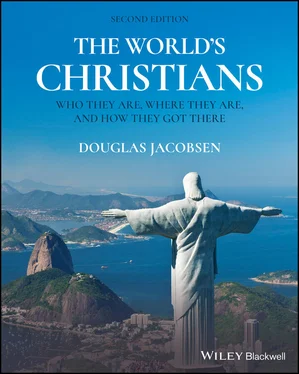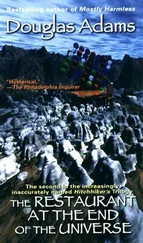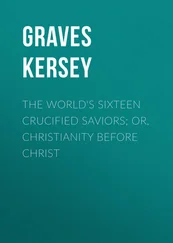1 ...7 8 9 11 12 13 ...33 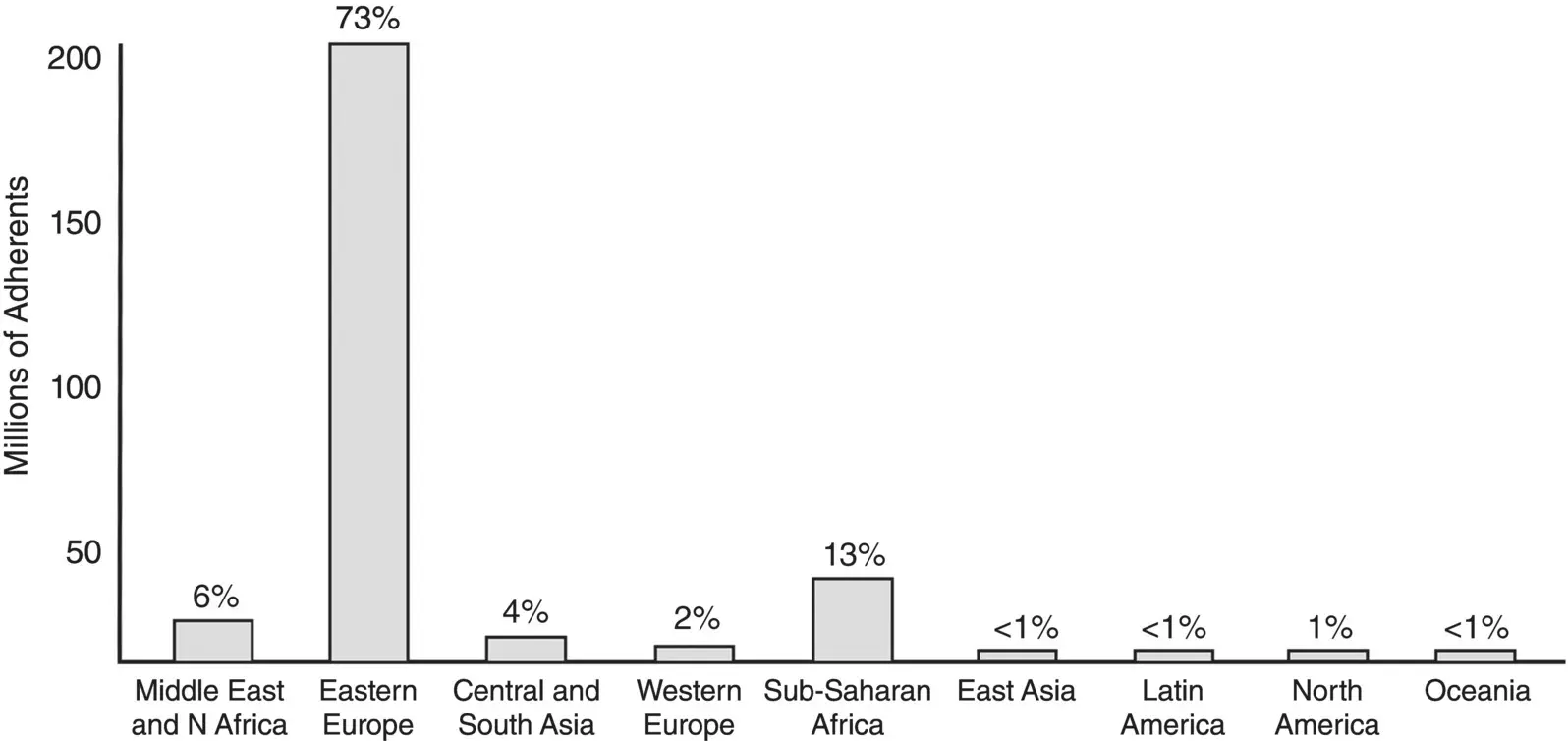
Figure 1.1 Number of Orthodox Christians living in each region of the world with percentage of all Orthodox Christians worldwide.
© John Wiley & Sons, Inc.
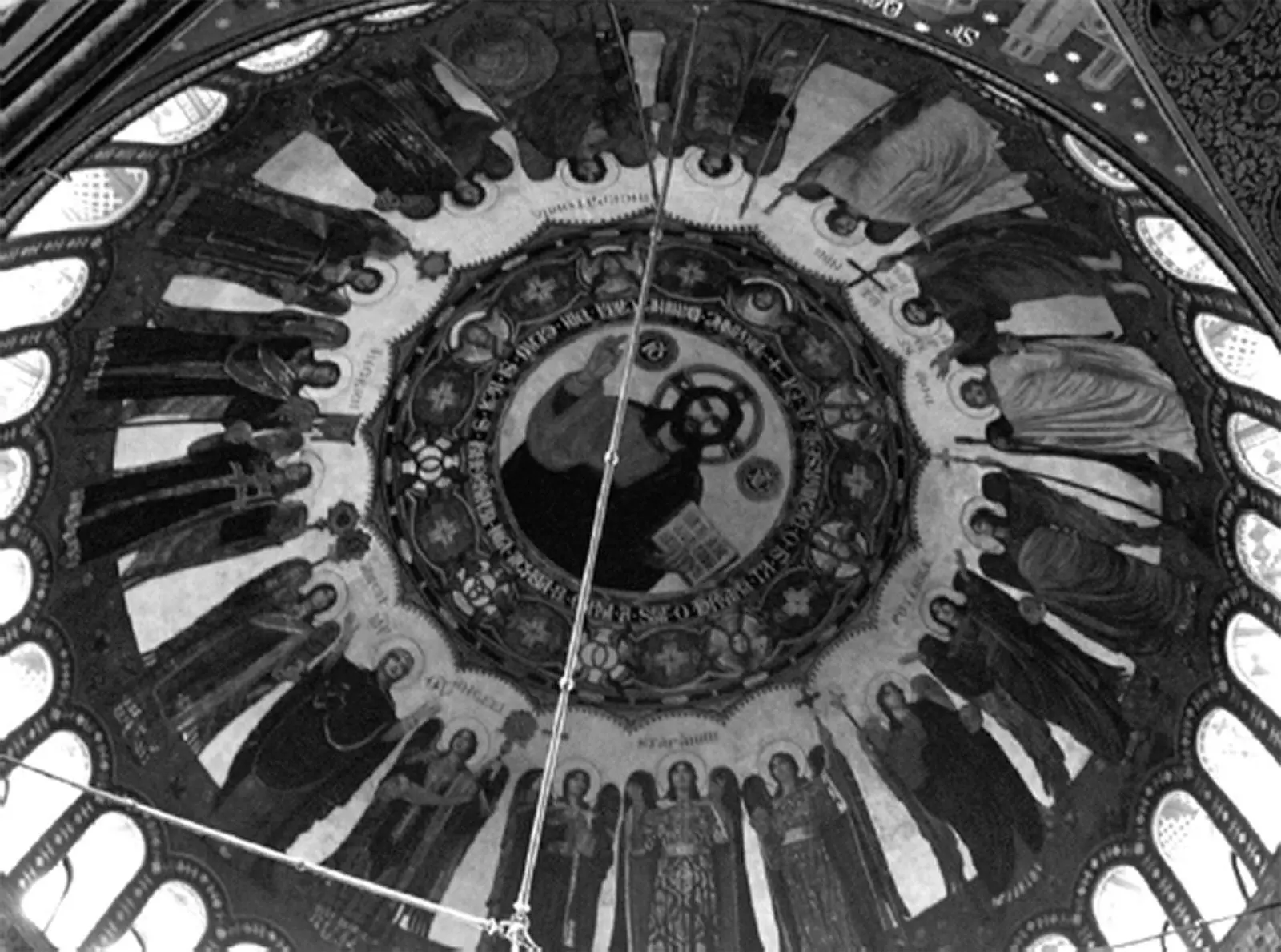
Figure 1.2 Holy Trinity Orthodox Cathedral (Sibiu, Romania), interior of main dome.
Photo by author.
Orthodox Christians view the church building as a sacred space, a temple where God’s presence is near. Other Christians sometimes refer to their churches as “houses of God,” but Orthodox Christians have a stronger sense of what that means compared to most other Christians. Within an Orthodox church, a person is surrounded by icons (holy images) that are meant to communicate that no Christian is ever alone and that all Orthodox Christians are part of one huge, transtemporal community. In most Orthodox churches there are icons on the ceiling, icons on the walls, icons on the screen or partition at the front of the church which is called an iconostasis , and icons on stands scattered throughout the building (see Figure 1.3). Some icons portray Christ, Mary, the angels, and the great saints of the past. Other icons depict the stories of the Bible or important events in the history of Christianity. This panorama of images is intended to make worshippers feel surrounded by a great community of faith, a community that includes both the living and the dead. The boundary between the living and the dead is thin within Orthodoxy, and Orthodox Christians believe that the saints – holy men and women who have died – can still hear their cries for help and assist them in times of need.
Just as the line between life and death is thinned, the line between the sacred and the secular is also visually blurred in Orthodox iconography. The sacred and the secular interpenetrate, overlapping in time and space. Angels appear everywhere in the icons because the Orthodox think they literally are everywhere in reality. They believe that at baptism Christians receive a guardian angel for protection from evil and for guidance in the way of holiness and truth, but fallen angels (demons) are also ubiquitously present, seeking to turn people away from God and the path of faith. Because this spiritual world is hidden from view, humans tend to forget it. The liturgy and the icons remind people that they live within an invisible spiritual world of angels and demons just as literally as they live in the visible realm of the material world. The brilliant colors used in the painting of icons – and most of them were originally brilliant even though many old icons have grown dark with age – are luminous reminders that the spiritual world is as real as, or more real than, the earth itself.
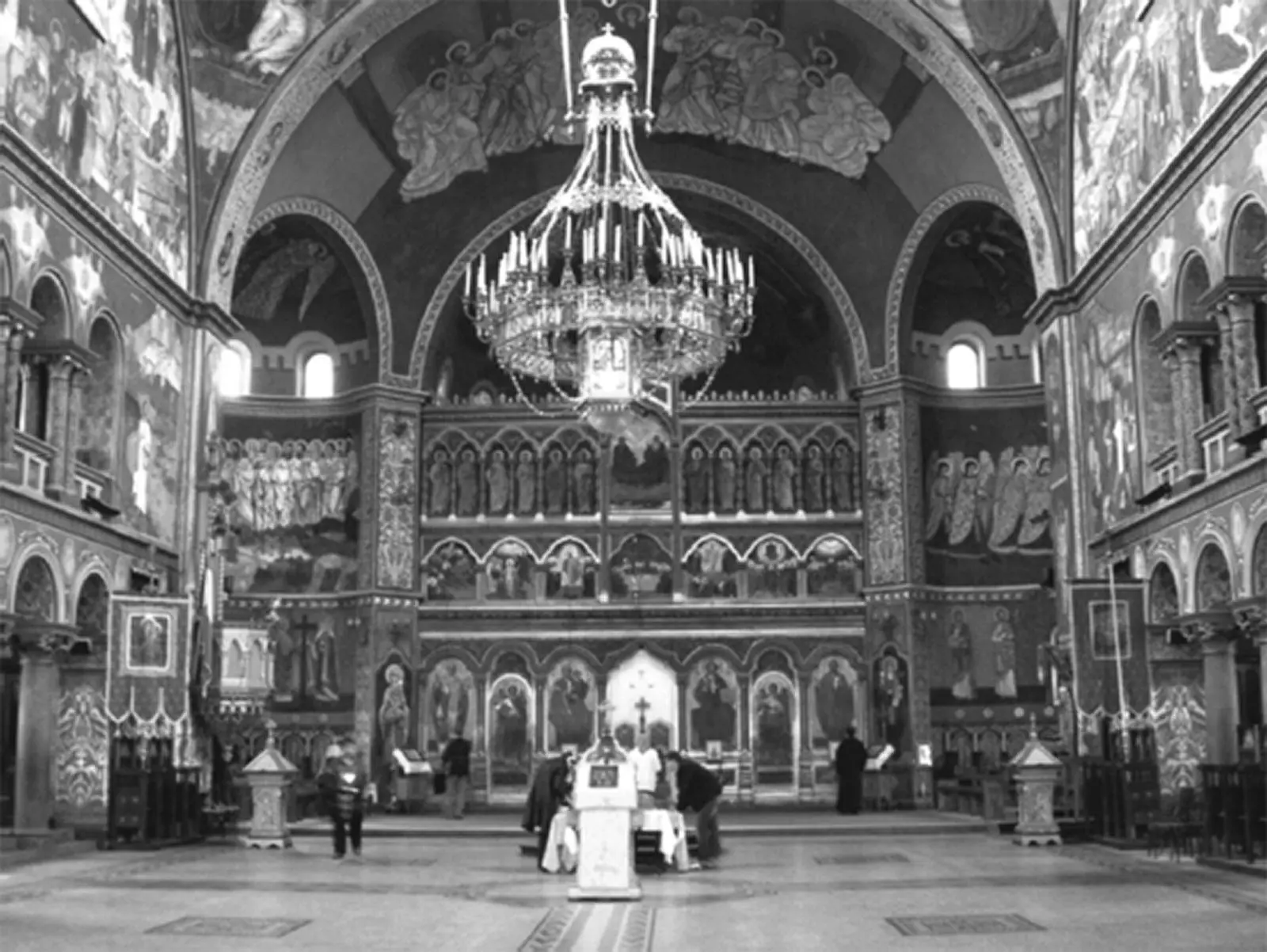
Figure 1.3 Holy Trinity Orthodox Cathedral (Sibiu, Romania), nave and iconostasis.
Photo by author.
The worship space of an Orthodox church communicates that nothing is ever done in secret. Life is lived in community. God is watching; Jesus is watching; Mary is watching; the angels are watching. And the saints are watching too. Orthodox icons – which are often displayed in homes as well as in churches – are understood to be not merely spiritual representations but observers of humankind. The eyes of an icon are always painted last, and when they are in place the icon becomes, in a sense, alive – a living portal connecting the earthly community with the spiritual community of God and the saints.
The most revered figure in the Orthodox tradition, apart from Jesus and the Trinity, is Mary, who is called Theotokos (“God‐bearer” or “Mother of God”) because she bore God incarnate in her womb when she was pregnant with Jesus. Mary is venerated not only because she is the woman through whom God entered the world, but also because she models how every Christian should live. When the Archangel Gabriel told Mary that God had selected her to be Theotokos , she replied simply: “Let it be done to me, as I am your servant.” God comes to people gently offering life in its fullness and, like Mary, each person must respond. In addition to modeling obedience, Mary also models holy suffering, since she endured watching her son being crucified. Finally, she is considered the most compassionate of all the saints, and icons of Mary communicate her desire to comfort all those who seek help in times of pain and distress.
An emphasis on the visual and the communal is the key to understanding Orthodox theology. For non‐Orthodox Christians, “theology” usually refers to the philosophical analysis of Christian beliefs. For Orthodox Christians, “theology” is much more experiential. It focuses on experiencing the presence of God as much as (or more than) it focuses on the explanation of belief. The purpose of Orthodox theology is not the achievement of intellectual understanding; the goal of Orthodox theology is to live in the holiness of God’s presence, in the fire and warmth of the “Divine and Uncreated Light” of God.
The Orthodox tradition tends to favor an apophatic style of theology. Apophatic theology describes who God is not – the many ways in which God can be misunderstood – rather than attempting the impossible task of capturing God’s character in human words. From the Orthodox perspective, the highest and best “theology” is a wordless expression of mystical communion with God that bypasses entirely the mediation of thoughts or ideas. Individuals cannot enter this encounter by thinking their way into it, but only through contemplation, by clearing the mind of all thoughts and distractions in a way that results in receptivity to the divine. The fourteenth‐century Orthodox theologian Gregory Palamas explains: “Contemplation … is not simply abstraction and negation; it is a union and a divinization which occurs mystically and ineffably by the grace of God, after the stripping away of everything from here below which imprints itself on the mind, or rather after the cessation of all intellectual activity.” 1 Orthodox Christians do not deny that there is a place for words and thought – a time to try to explain the spiritual realities of life insofar as they can be translated into human discourse – but any theology of words is clearly secondary to theology embodied in the experience of God (see Voices of World Christianity 1.1).
Orthodox spirituality focuses on the higher world – the invisible world of God, the angels, and the saints – but Orthodox spirituality also holds the earthly world in high regard. The Orthodox tradition teaches that human beings have both an earthly, material nature and a spiritual, divine nature, and both natures are good because both come from God. This is God’s world, and it was created to be both appreciated and enjoyed. Ordinary life is honored in the Orthodox tradition. Time together with family and friends is considered a blessing, and the church itself is an extended family. Living together in the fellowship of the church requires times to fast, but also times to feast. There are times for repentance and sorrow, but also times for celebration, including the enjoyment of good food and wine. Rather than conflicting with the other‐worldly emphases of Orthodox spirituality, this earthly spirituality grounds it in the here and now. Orthodox spirituality is deeply life‐affirming and simultaneously nurtures an awareness that all of life is lived in God’s holy presence.
Читать дальше
